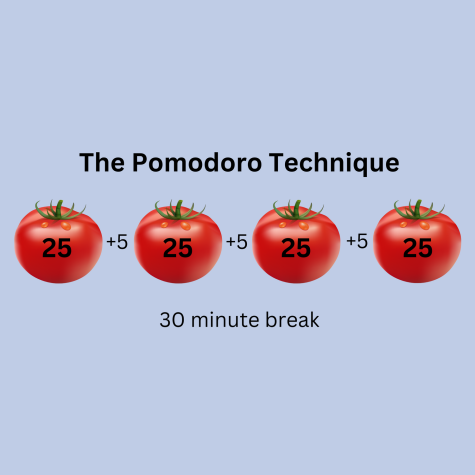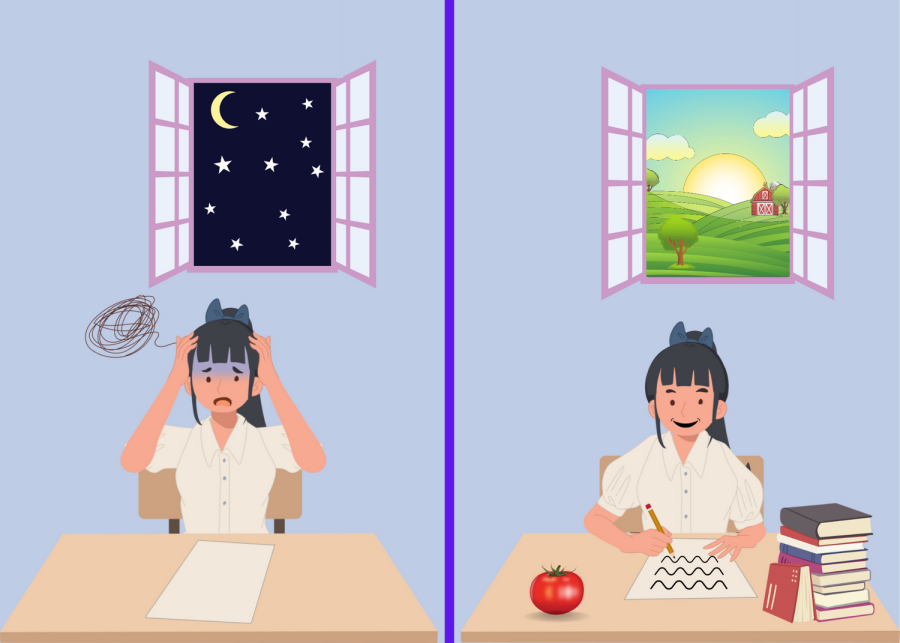Taking Breaks Could Increase Your Productivity This Exam Season
The Pomodoro Technique can help get more work done without getting exhausted.
December 5, 2022
For students, the last few weeks of the semester can feel like shoveling snow in a blizzard. Major projects and exam preparation start to pile up, and it can be hard to figure out where to start or how to keep pushing without burning out. Though the to-do list between now and finishing fall classes may seem impossible, there are ways to make it more manageable.
In my junior year of high school, one of my teachers told my class about the Pomodoro Technique, sharing that his friends used it when medical school required them to study for full days at a time. The Pomodoro Technique is a task completion strategy that involves working for 25 minutes, taking a five minute break, then repeating that process and making every fourth break 30 minutes long. The technique gets its name from the Italian word for tomato, because its inventor intended for it to be practiced using a tomato-shaped kitchen timer.

My whole life I’d thought of studying as something I had to commit to and finish in one go. I had never considered taking breaks in the middle of a long task. I’d sit down with my revision sheets for a subject and agonize over them until I felt ready for an exam.
An article by Melanie Curtin for Inc. describes how the average office worker spends hours of their day socializing, preparing snacks, using their phone, and doing other non-work tasks, being productive for a fraction of the eight-hour work day. If this sounds like you when you try to study, the Pomodoro Technique might be for you. The technique acknowledges the human needs that fall outside the scope of work—needs that can fall to the sidelines in the face of a finals-season workload—and makes time for those needs to be fulfilled while relying on personal discipline to still get good work done. It reduces the intimidation that those prone to procrastination can feel in the face of a looming task and breaks things down into achievable work sessions.
After being introduced to it, my friend and I tried the technique during our finals week that winter. We used one of many Pomodoro timer apps, but it can be done with any basic timer. We studied together every afternoon at a public library, enforcing periods of silent work between us and taking timed breaks during which we explored the library, chatted with each other, and tried foods at the library cafe. I studied better than I ever had before. I went home every night being totally or near-done revising all the material I needed. My approach to studying had changed completely.
The technique doesn’t need to be practiced strictly with the given intervals. It can work as a general guideline, too. Maybe 40 minutes of work and 10-minute breaks are more effective for you. For me, the technique is best applied to revision and repetitive tasks, but it isn’t useful for writing or projects where I follow a creative flow. It may not be a fix-all, but it turned my academic life around one winter in high school, and it could do the same for yours, too.




















